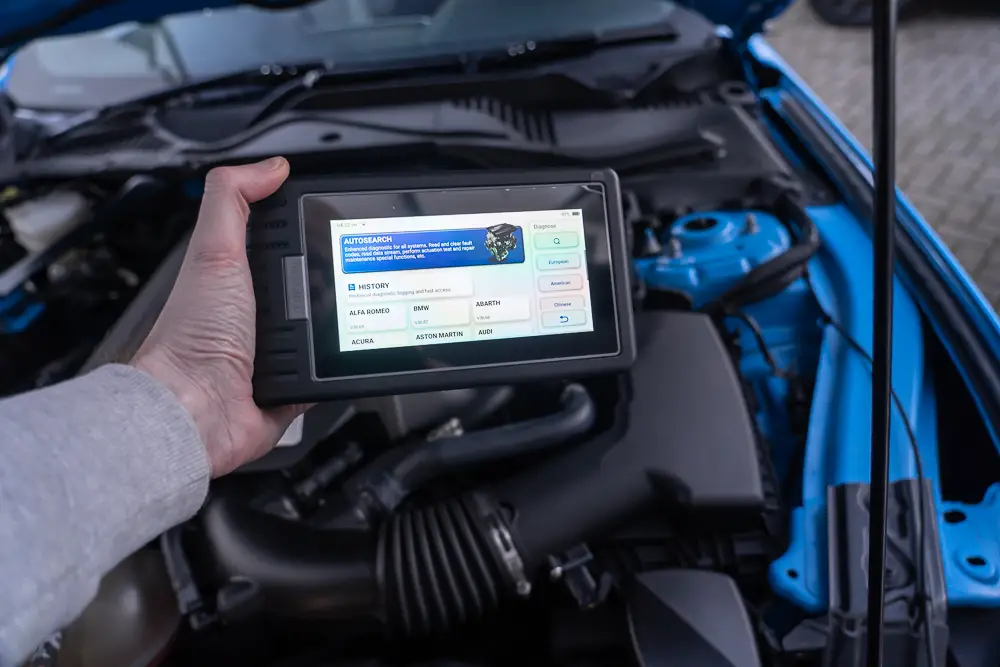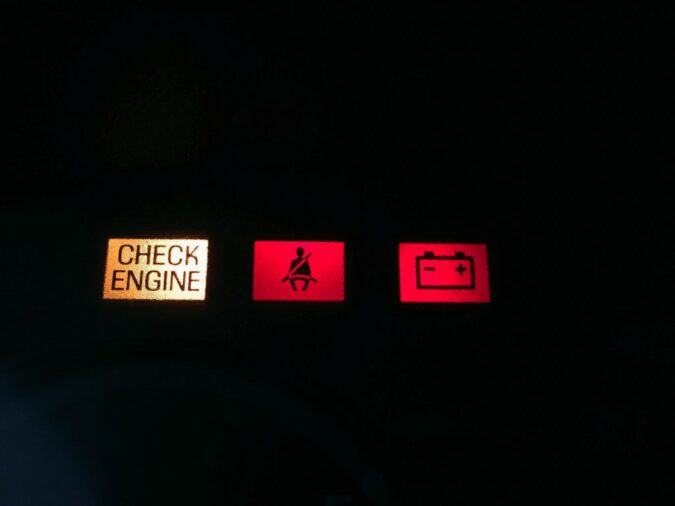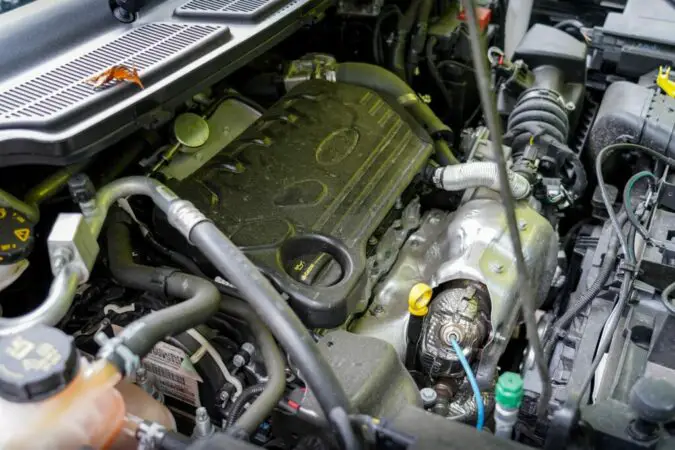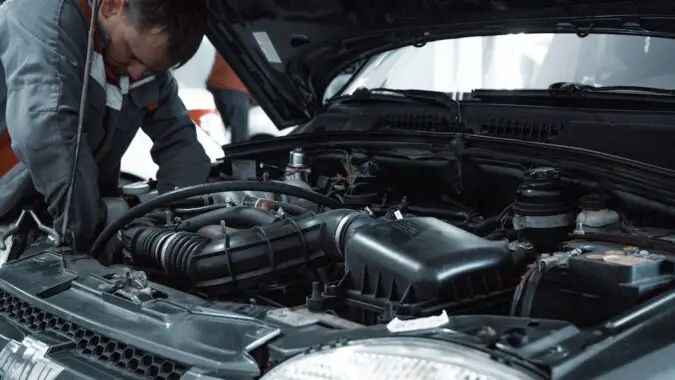Have you gotten the check engine light and you have diagnosed a P0117 code? Well, if that is the case and you find yourself in this situation, then you are at the right place because there will be a lot to cover when it comes to this problem with your car.
Having a problem with the check engine light can be something really annoying to deal with. Why I’m saying this? Well, because it is true, you can never know why this check engine light is there unless you try to diagnose it and hopefully solve your problem permanently.
For this, you need to ramp up your skills and learn how troubleshooting is done the right way. Only this way you will be successful and possibly avoid some permanent damage to be done to your engine like in our case with the coolant temperature sensor. This sensor is one of the most important pieces of the puzzle and fixing this problem with the P0117 code will help you avoid a ton of unwanted scenarios. But how you can do this?
First, by learning what is car diagnostics and how this procedure is done to a car. Then we will cover more about the problem itself. We will cover the P0117 code and then we will discuss the coolant temperature sensor and its diagram.
Then we will cover the probable causes for this issue and the symptoms that will be present. After that, we will learn how to bench test a coolant temperature sensor and learn how to solve this problem. So, let’s get into it.
P0117 Code
Now before we dive into the topic of what is the P0117 code and its meaning. Let’s first cover the basics of car diagnostics and learn how this procedure is done and the tools needed. I bet that there are a ton of people reading this article who are not into cars and want to learn the basics of how this is done the right way. So, this chapter is dedicated to them. If you want to learn more follow along.
Nevertheless, modern car diagnostics is a really complex topic. It’s not like back in the day when cars were really simple and to diagnose a problem, you only needed to have a good ear to detect sounds and then adjust the carburetor a little bit or the valve and ignition timing.
Modern cars are much more than that and require a lot of skill in order for you to be able to get things right. And also they require tools.
More precisely, they require an OBD2 scanner. With this scanner, you will be able to get access to the car computer and then see what the sensors are reporting and based on the trouble codes look for your problem.
Frankly, for each electrical component, there are a couple of different codes that might pop up and can indicate different things. Like in our example when you have a low circuit voltage from the coolant temperature sensor and you get the P0117 Toyota code.
You need to learn why is this the case and what this means. And luckily for you, we are going to explain more about this in the next chapter in detail.
P0117 Engine Coolant Temperature Circuit Low Input
Now let’s get to business and learn more about this problem with the P0117 code, what this code means in the first place and what is its definition? Let’s explain.
The simplest definition of this code is “P0117 Engine Coolant Temperature Circuit Low Input”. This means the voltage that this sensor produces is lower than the one that the computer requires.
If you didn’t know, the coolant temperature sensor should produce a certain voltage as the coolant warms up. And when the temperatures rise, the voltage should increase from zero up to 5 volts, which is the reference voltage.
So, if the voltage doesn’t rise, you will have a problem with this sensor and overall with the car. You will struggle with symptoms of a bad coolant temperature sensor which we are going to cover later in the article.
What is important for you in this case when you get a code like this is not to panic. Panicking will get you nowhere. What is good though is that this sensor is dead easy to diagnose.
But what is a coolant temperature sensor and what is the diagram for this sensor? Well, that’s what we are going to cover next in this article, and after we will dive into the P0117 Dodge causes.
What Is A Coolant Temperature Sensor?
Now before we dive into the causes of this P0117 code, let’s learn more about the coolant temperature sensor and what this sensor is all about. Does it measure coolant temperatures?
Well, not quite. This sensor is used by the fuel management system. This sensor has the sole goal to detect the temperature of the coolant inside of the engine block when the engine starts.
Then based on the sensor’s input. The computer adjusts the air to fuel mixture. So, whenever you have a problem with this sensor, you will have a difficult time when starting the vehicle.
Mainly because whenever you perform a cold start, the computer needs to know the temperature of the coolant in order to drop more fuel into the mix. If it records let’s say hot coolant temperatures by mistake, there will be a poor start and the engine could stall.
Also, the coolant temperature sensor gives input to other systems. Namely, the idler control valve, the EGR valve, and also the radiator fan. So, you understand why it is such an important component and you need to sort out the P0117 Chevy code.
Coolant Temperature Sensor Diagram
Now before we dive into the P0117 causes, let’s learn more about the diagram of this sensor. This information will be quite useful when it comes to diagnosing a bad coolant temperature sensor.
It is worth noting that there are two types of coolant temperature sensors. One of them is the 3-wire sensor and the other is the 2-wire sensor. Most cars are running two-wire sensors.
The three-wire sensor has three wires. One wire is the signal wire, the other wire is the 5v reference wire. And the last wire is the ground wire.
The two-wire sensor only has a ground wire that goes to the PCM and a 5-volt reference wire. The sensor gets the input back from the sensor through the ground wire. And the body of the sensor serves as a constant ground.
So, how does this works behind the curtain? Well, when the coolant temperature rises, the voltage that produces the sensor also rises. While the resistance of the sensor drops in this case. When the sensor cools down, the voltage drops and the resistance rises.
We measure resistance with an ohm meter, while voltage with the voltmeter of the multimeter tool. But more on this later on when we are going to diagnose this P0117 Honda Code.
Causes For P0117 Code
Now let’s cover the causes of the P0117 code. As we all know, everything happens for a cause and the same is the case with this code. In fact, there are a number of things that could trigger this type of code on your car and cause it to malfunction.
The first and most obvious cause for the P0117 code as you can probably assume is a dead ECT sensor. This coolant temperature sensor can fail completely and die. It will stop working and will never be the same again.
Then the next probable causes of this problem are the wires. The wires and connectors can also get damaged and cause a problem like this with your car.
The wires can short out and cause problems. This could be caused by external damage to the wires in some cases or deterioration of the cables inside of the harness. Some carmakers are using the cheapest plastic that simply falls apart.
In some cases, if you live in a place where there are a ton of rodents what could happen is that rodents could simply eat the wires of your harness and cause this issue.
Also, in addition to this, loose terminals could also be one of the causes of this problem. On the harness as well as the sensor itself. The connectors are also often made out of cheap plastic and they can break over long periods of time and ruin your engine performance by causing the coolant temperature sensor not to work as it should.
And lastly, the root of the P0117 problem sometimes is found in the PCM itself. The PCM is the car computer. And this computer can fail from the inside and cause a ton of trouble for you.
Symptoms Of A Bad Coolant Temperature Sensor
Now let’s get into the symptoms of a bad coolant temperature sensor. In the next couple of chapters, we will dive through all of the symptoms that are associated with this problem. With primarily focus on the P0117 code.
Knowing the symptoms will really help you out when it comes to diagnosing this problem and learning if indeed you have a bad ECT sensor or something else. So, let’s cover the symptoms real quick before we dive into the diagnostics process and learn how this is done on a car.
1. Check Engine Light
The first and most obvious symptom of a bad ECT sensor is the check engine light. And since you are here, you are probably aware of this symptom since you have diagnosed the P0117 code. You might also encounter other ECT-related codes, such as the Honda Civic P0128 code and the P0128 Jeep code.
But what is good to know is that there are other codes concerning this sensor as well. These include P0115, P0117, P0118, P0119, P0125, P0127, and PO128 code.
All of these codes indicate a problem with the cooling or specifically this sensor. This is why you need to dive deeper and troubleshoot the problem. Later on, we are going to explain how this is done. Now let’s move to the next symptoms.
2. Trouble Starting The Engine
The second most common symptom when you have a P0117 code is the difficulty of starting the engine. The engine will not want to start smoothly because there will be no extra fuel.
Remember that this ECT sensor detects the temperature of the coolant and then tells the PCM to drop an extra bit of fuel on startup. If there is no extra fuel, the cold engine will not like to work well. So, it will be really difficult to start this engine.
You might crank it a couple of times before the engine starts. This could also misguide you to think that you have a bad crankshaft position sensor or bad spark plugs. But this isn’t the case. Sometimes this ECT sensor can go bad and cause troubles like these with the P0117 Subaru code.
3. Engine Stalling
The next symptom that we would like to cover when it comes to the P0117 code is the situation when the engine is stalling. And trust me, the engine will love to stall after startup. But why is this the case?
Well, as we explained previously, the engine will like to stall because there will be not enough fuel in the system. The mixture will be too lean for a cold start and not sufficient to keep the engine happy and running well.
So, it could eventually stall all of a sudden if you don’t press on the gas and give it more throttle. So, when this happens, there are two options. Either the fuel filter or the injectors are bad, or you have a problem with the ECT sensor. And this should be one of your top priorities to check in order to solve the P0117 code.
4. Rough Idle
The next symptom that we are going to cover when it comes to the P0117 code is the rough idle. The engine will tend to shake if it does not get the right air to fuel mixture when it starts.
As we explained in the previous chapters, it could not be able to start, could stall after starting, and the last situation is when the engine starts and you are having a rough idle.
The engine in this situation will shake a lot and the RPM will fluctuate until the engine warms up and it smooths out. So, this is one of the symptoms. Now let’s move on to the next symptom of the P0117 code.
5. Engine Running Rich
And the next symptom of a P0117 code is when the sensor detects extremely low temperatures that are far below zero. And this is the complete opposite of the previous symptoms.
When this happens the engine will run rich. When a car runs rich as you probably know, it tends to have an air to fuel ratio that is not ideal. More precisely, there is more fuel and fewer parts of air.
https://www.youtube.com/watch?v=Nkoql6qvHjI
This will lead to a situation that is known as a rich state. When this happens your engine will run roughly as we mentioned before and will drink considerably more amount of gas than it usually does. So, your fuel mileage will drop significantly.
6. Black Smoke And Smell Of Gasoline
Another symptom that is associated with the previous symptom of P0117 is the symptom of smoke from the exhaust. More precisely black smoke. And frankly, there will be a lot of smoke in this situation.
Also, a strong smell of gasoline will be present (tempting you to figure out how to get rid of cigarette smell in car and how to get cigarette smell out of car). Sometimes even a rotten egg smell in most extreme situations because there will be too much fuel to be processed in the right manner and this as we all know is not something that you want.
7. Engine Overheating
And the last symptom that is associated with a bad ECT sensor and the P0117 Subaru code is the situation when your engine overheats. But why is this the case?
https://www.youtube.com/watch?v=_JXHgWumzvw
Well, your engine will overheat if your ECT sensor is not working. Your cooling system will work. But in some extreme cases when the fan needs to kick in, there will be a bad input from the ECT sensor, so the fan could stay in the off position and the car will not be able to cool off. So, you need to be really aware of this issue. Now let’s move to the diagnostics process of the P0117 code.
How To Diagnose & Fix P0117 Code?
Now let’s move to diagnose the P0117 Mazda code. How you can diagnose a problem with this ECT sensor on your car and see if it works or not?
Well, the first thing that you will want to do is to check the wires. And for this, you need to unplug the sensor and then get a multimeter. Usually, there are two wires one is the 5v supply and one is the signal ground wire that goes to the PCM. To locate the signal wire tweak the multimeter to measure continuity.
Place the probe on the connector pin and if the multimeter beeps it means that the signal is good. Then tweak the multimeter to measure volts. Place the probe to the other pin and see if you get the reference voltage. If you have 5 volts of supply and you have continuity, the wiring is good.
The next thing to check is the sensor. You can check this sensor in two ways. To measure the voltage or to measure its resistance. We will cover the resistance method since it is easier.
For this, you will need to place alligator clips on each of the connectors and then connect them with the probes. Next, tweak the multimeter to measure ohms, which is the omega sign.
The reference value for a good sensor that you should get for room temperature should be 2.5 kilo-ohms. If you get this reading then great. The next thing you would want to do is to apply heat. You can use a hairdryer for this purpose.
As the sensor heats up, the resistance should decrease. That’s the whole method of action. More on this you can check in the video.
Cost To Fix This P0117 Code
So, what is the cost to fix this problem with the P0117 Jeep code? Well, the diagnostics process alone at a shop will cost you between $100 and $120.
Then comes the ECT sensor which costs about $80 and then there is the labor that will also cost you about $100. So, the total for this job would probably be about $300 more or less. If you do this replacement on your own, you will save probably about $200.
Conclusion
In this article, we have covered quite a bit when it comes to the P0117 Chevy code. First, we learned the basics of car diagnostics and how it is done. Then we elaborated more on the ECT sensor and the causes and symptoms of this sensor.
Then we learned how you can diagnose and fix the problem accordingly without any big troubles by using a multimeter tool.
F.A.Q To P0117
Now let’s answer some frequently asked questions.
What Is ECT Temperature
This is a coolant temperature sensor. This sensor is a special sensor installed on your engine that measures the temperature of your coolant. Then this sensor helps the engine to adjust the air to fuel ratio when the car starts. It also affects the work of the EGR valve as well as the radiator fan and tells it when to kick in.
What Does Code P0117 Mean
This code means that the ECT sensor produces low voltage. Which will result in a check engine light and problems with starting the car and having a rough idle or the car being unable to start at all in some cases.
Can A Bad Coolant Temperature Sensor Cause Car Not To Start
Yes, it can prevent the car from starting in some extreme cases. The air to fuel mixture will be too low since the input of the sensor will be lacking. So, the engine will find it difficult to start in this situation.
How To Fix Engine Code P0117
You can fix this code by replacing the ECT sensor in most cases. The sensor is probably dead and needs to be replaced. Since it is producing a low voltage, there couldn’t be many other things that could trigger this situation than a bad ECT sensor.
Can You Drive With A Bad Coolant Sensor
Driving like this is not recommended unless you want your car to overheat in the worst case. Remember that this sensor regulates the radiator fan as well. So, if this sensor is not working, the fan will not kick in and your engine will overheat.
Can Low Coolant Cause Rough Idle
Yes, it can, the engine will tend to overheat in this situation. And as the engine overheats, it will start to run poorly and rough. So, make sure that you have the right amount of coolant all the time if you want to avoid these situations.





